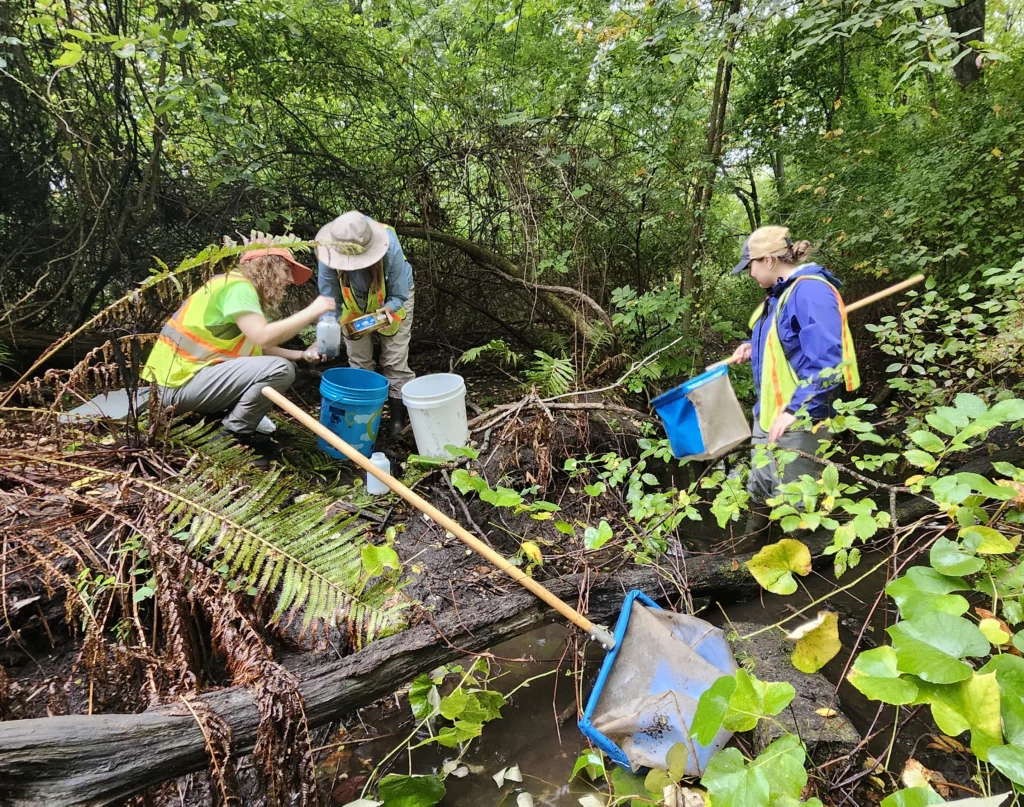Creek Critters as Water Quality Clues
October 09, 2025
OARS River Log | By Heather Conkerton, OARS’ Ecological Restoration Coordinator | Published Oct 9, 2025
If you’ve ever flipped over a rock in a stream and seen tiny bugs, snails, or worms wriggling around, you’ve met the “creek critters” that can tell us a lot about water quality. Scientists call them benthic macroinvertebrates, a fancy term that simply means “small animals without backbones that live on the bottom of rivers and streams.”
Why are they important? Each species has a different tolerance to pollution. Some, like stoneflies and mayflies, need clean, well-oxygenated water to survive. Others, like midges and aquatic worms, can hang on even in more degraded conditions. By looking at which critters are present (and which are missing), we get a clear picture of stream health.
This process is called stream biomonitoring, and it’s a powerful, low-cost way to track water quality over time. Instead of relying only on chemical tests that give a snapshot, macroinvertebrates provide a longer-term record, almost like nature’s water quality report card.
This September, OARS 3 Rivers launched a pilot macroinvertebrate study to test out this approach locally. Our Team members, Heather Conkerton—OARS’ Ecological Restoration Coordinator and Abby McCarthy—OARS’ Water Quality Program Manager, joined by our new TerraCorps Service members, Callie Sties and Grace Bellavance, spent time in the field collecting aquatic critters to send to a lab for identification. Once the results are in, we’ll have a clearer picture of which sampled areas fall into poor, fair, good, or excellent water quality. Combined with our ongoing water quality monitoring, this new data will help us better understand and track the health of our rivers.

The pilot was a success, and OARS hopes to expand macroinvertebrate monitoring in the future. Not only does this data help guide restoration and protection efforts, but it’s also a fun and hands-on way to connect with local rivers and streams.
So, the next time you see a stonefly clinging to a rock, know that these little critters are doing big work. They are helping us understand and protect the health of our rivers.
Website resource (https://www.macroinvertebrates.org/)

